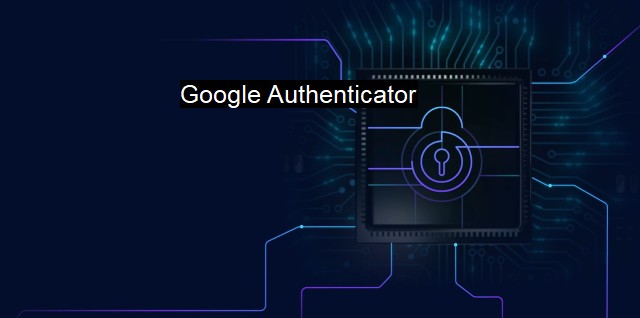What is Google Authenticator?
Securing Your Online Accounts with Google Authenticator: Why Two-Factor Authentication is More Important than Ever
Google Authenticator is a powerful security feature developed by Google to elevate the paradigm of cyber protection for Google account users. Operating under a multi-factor authentication model, Google Authenticator enhances account security by implementing an added layer of protection against unauthorized access. This additional layer safeguards users' data, even when the primary password gets compromised. By using it, users can significantly decrease the potential risk from cyber fraud, nullify phishing campaigns, and minimize the damage incurred by malware or automated bot invasions.In addition to the traditional method of logging into an online account using an email address or username accompanied by a password, Google Authenticator delivers a multifaceted authentication response. It integrates a two-step verification process wherein users must provide not only their primary password but also a unique numeric code. This code auto-generates through the Google Authenticator application, and the setup resides on offline mediums such as the user’s smartphone or tablet. The app serves as the generator and container for these temporary and expiring codes, each provided for one-time use only.
The crux of Google Authenticator lies in its utilization of the Time-based One-Time Password (TOTP) system. This system creates a dynamic scenario by supplying a new verification code within a particular timeframe. This fleeting nature of the security code raises the access barrier for potential intruders. Unlike static passwords that hackers can breach repetitively, these time-sensitive codes expire after thirty seconds. The shortage notably decreases the window of opportunity for cybercriminals to manipulate and exploit user data and access.
Because Google Authenticator works offline, it also eliminates threats associated with intercepting the codes via SMS or email. This feature adds an extra layer of security by making it harder for hackers to intercept your one-time passcodes. since there are no geographical restrictions, users have complete convenience and flexibility in validating their credentials from any part of the world.
Google Authenticator serves as an excellent safeguard from account-siphoning tactics like phishing. Phishing is a fraudulent activity where the attacker attempts to procure sensitive information by disguising themselves as a trustworthy entity. By introducing a second layer of required information, Cybersecurity becomes exponentially challenging. Even if a determined attacker successfully deceives a user into providing the primary password, the hacker cannot penetrate the account without the matching Google Authenticator code.
Despite its potent efficacy against cyberattacks, Google Authenticator can leverage its protections when users also employ a secure antivirus program. An immersive and efficient antivirus aids in detecting and neutralizing potential threats at the initial level. Resultantly, it helps contain the damage, if any, and gives users enough time and resources to engage their Google Authenticator for validating access credentials—an especially critical step when concerning malicious invasion attempts from unverified sources.
Google Authenticator has the capability to support multiple accounts, which users can manage seamlessly from one device. This feature upholds the versatility of the application and expands its cyber-protective enclosure across different platforms.
Google Authenticator significantly raises the fortitude of cyber defense systems by incorporating a Time-based One-Time Password mechanism, minimizing the window for potential breaches in the process. It is a secure, offline, multi-account supportive application that effectively immunizes data from unauthorized sources of access, thereby delivering an invaluable asset to the realm of cybersecurity. When used in tandem with antivirus measures, Google Authenticator ensures an optimized safety net for users.

Google Authenticator FAQs
What is Google Authenticator?
Google Authenticator is a mobile app developed by Google that generates one-time passwords (OTP) for two-factor authentication (2FA). It provides an extra layer of security to your accounts by requiring two forms of identification: your password and a temporary code generated by the app.How does Google Authenticator work?
Google Authenticator uses a time-based one-time-password algorithm and generates a unique code based on a shared secret key that is stored on both the server and your device. When logging into an account that has 2FA enabled, you enter your username and password as usual, then use the code generated by Google Authenticator to complete the login process. The code is valid only for a short duration of time, usually 30 seconds, and cannot be reused.Which websites or services support Google Authenticator?
Many websites and services support Google Authenticator, including popular platforms such as Google, Facebook, Twitter, Dropbox, and Amazon. Most cryptocurrency exchanges also support 2FA using Google Authenticator. You can check the security settings of your accounts to see if they offer 2FA and whether they support Google Authenticator.Is Google Authenticator safe?
Google Authenticator is generally considered safe and secure. It uses encryption to protect your shared secret key and generates unique one-time passwords that are not stored anywhere. However, it's important to keep your device secure and protect it with a strong password or PIN. Also, if you lose your phone or uninstall the app, you may need to go through a recovery process to regain access to your accounts. For added security, you can enable fingerprint or face recognition on compatible devices.| | A | | | B | | | C | | | D | | | E | | | F | | | G | | | H | | | I | | | J | | | K | | | L | | | M | |
| | N | | | O | | | P | | | Q | | | R | | | S | | | T | | | U | | | V | | | W | | | X | | | Y | | | Z | |
| | 1 | | | 2 | | | 3 | | | 4 | | | 7 | | | 8 | | |||||||